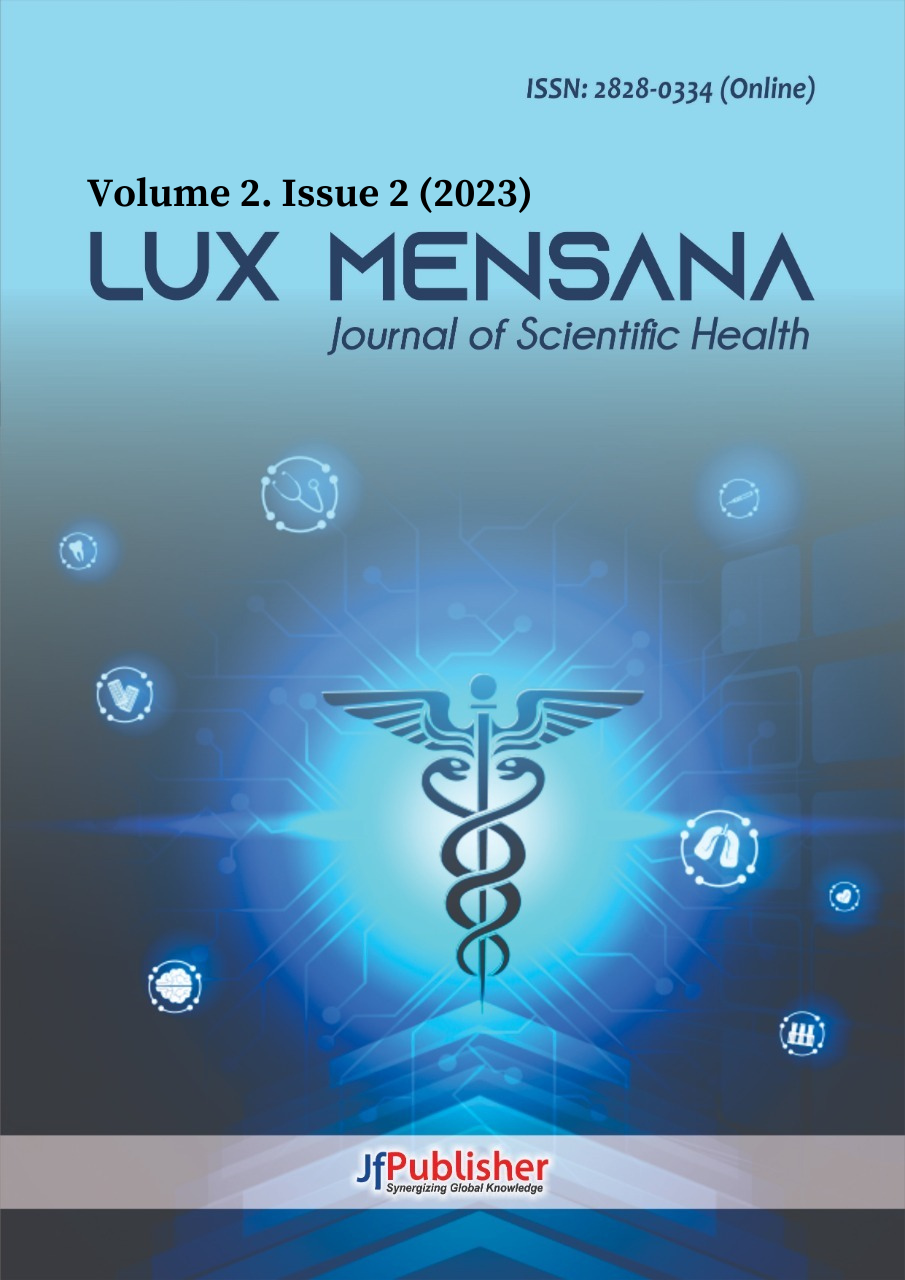THE DEVELOPMENT OF CHOLERA VACCINE PRODUCTION: A LITERATURE REVIEW
Universitas Padjadjaran
DOI:
https://doi.org/10.56943/jsh.v2i2.301Introduction. Cholera is a diarrheal disease that causes dehydration and rapid death due to infection with bacterium Vibrio cholerae that develops in the colon. Cholera generally develops in countries with poor sanitation, poverty, and unavailability of clean water such as Africa and South Asian. One of the efforts to prevent cholera transmission to tourists who will visit the country can be conducted through vaccines. Method. This research was made to find out the development of cholera vaccine using the literature search method through PubMed, Elsevier, Google Scholar databases, and credible websites. Result and Analysis. From the results of several literature searches, there is a monovalent O1 serogroup vaccine that contains killed whole-cell bacteria such as Ducoral and live-attenuated bacteria, called Vaxchora. Discussion. In addition, there are bivalent vaccines O1 and O139 serogroups that contain whole-cell killed bacteria such as Shanchol, Euvichol, mORC-Vax, and Cholvax.
Keywords: Cholera Cholera Vaccines Vaccine Production
Ahmed, M.U. et al. (2018) ‘Cholera prevention and control in Asian countries’, BMC Proceedings, 12(S13), p. 62. Available at: https://doi.org/10.1186/s12919-018-0158-1.
Bhattacharya, S.K. et al. (2013) ‘5 year efficacy of a bivalent killed whole-cell oral cholera vaccine in Kolkata, India: a cluster-randomised, double-blind, placebo-controlled trial’, The Lancet Infectious Diseases, 13(12), pp. 1050–1056. Available at: https://doi.org/10.1016/S1473-3099(13)70273-1.
CDC (Centers for Disease Control and Prevention) (2012) Immunization: The Basics, National Center for Immunization and Respiratory Diseases. Available at: https://www.cdc.gov/vaccines/vac-gen/imz-basics.htm (Accessed: 26 January 2023).
CDC (Centers for Disease Control and Prevention) (2022) Cholera - Vibrio cholerae infection, Centers for Disease Control and Prevention, National Center for Emerging and Zoonotic Infectious Diseases (NCEZID), Division of Foodborne, Waterborne, and Environmental Diseases (DFWED). Available at: https://www.cdc.gov/cholera/index.html (Accessed: 23 January 2023).
Chen, W.H. et al. (2016) ‘Single-dose Live Oral Cholera Vaccine CVD 103-HgR Protects Against Human Experimental Infection With Vibrio cholerae O1 El Tor’, Clinical Infectious Diseases, 62(11), pp. 1329–1335. Available at: https://doi.org/10.1093/cid/ciw145.
Clemens, J. et al. (2011) ‘New-generation vaccines against cholera’, Nature Reviews Gastroenterology & Hepatology, 8(12), pp. 701–710. Available at: https://doi.org/10.1038/nrgastro.2011.174.
Deen, J., Mengel, M.A. and Clemens, J.D. (2020) ‘Epidemiology of cholera’, Vaccine, 38, pp. A31–A40. Available at: https://doi.org/10.1016/j.vaccine.2019.07.078.
Gabutti, G. et al. (2020) ‘Cholera, the Current Status of Cholera Vaccines and Recommendations for Travellers’, Vaccines, 8(4), p. 606. Available at: https://doi.org/10.3390/vaccines8040606.
Ilic, I. and Ilic, M. (2023) ‘Global Patterns of Trends in Cholera Mortality’, Tropical Medicine and Infectious Disease, 8(3), p. 169. Available at: https://doi.org/10.3390/tropicalmed8030169.
Immunisation Advisory Centre (2022) A brief history of vaccines, Immunisation Advisory Centre. Available at: https://www.immune.org.nz/vaccines/development/a-brief-history-of-vaccines (Accessed: 26 January 2023).
Ka Praja, R. et al. (2021) ‘The Existence of Vibrio Cholerae in Indonesia: From Environmental to Clinical Aspects (A Concise Review)’, OISAA Journal of Indonesia Emas, 4(1), pp. 1–8. Available at: https://doi.org/10.52162/jie.2021.004.01.1.
Kollaritsch, H. et al. (2000) ‘Mefloquine concentration profiles during prophylactic dose regimens’, National Library of Medicine, 112(10), pp. 441–7.
Levine, M.M. et al. (2017) ‘PaxVax CVD 103-HgR single-dose live oral cholera vaccine’, Expert Review of Vaccines, 16(3), pp. 197–213. Available at: https://doi.org/10.1080/14760584.2017.1291348.
Lopez, A.L. et al. (2008) ‘Cholera vaccines for the developing world’, Human Vaccines, 4(2), pp. 165–169. Available at: https://doi.org/10.4161/hv.4.2.5122.
Lopez, A.L. et al. (2014) ‘Killed oral cholera vaccines: history, development and implementation challenges’, Therapeutic Advances in Vaccines, 2(5), pp. 123–136. Available at: https://doi.org/10.1177/2051013614537819.
Mosley, J.F. et al. (2017) ‘Vaxchora: The First FDA-Approved Cholera Vaccination in the United States’, P and T, 42(10).
Odevall, L. et al. (2018) ‘The Euvichol story – Development and licensure of a safe, effective and affordable oral cholera vaccine through global public private partnerships’, Vaccine, 36(45), pp. 6606–6614. Available at: https://doi.org/10.1016/j.vaccine.2018.09.026.
Rahimah, H. and Fadhilah, R. (2022) ‘Efforts To Increase Breast Milk Production: Literature Review’, Lux Mensana: Journal of Scientific Health, 1(2), pp. 56–63.
Saluja, T. et al. (2020) ‘An overview of Vaxchora TM , a live attenuated oral cholera vaccine’, Human Vaccines & Immunotherapeutics, 16(1), pp. 42–50. Available at: https://doi.org/10.1080/21645515.2019.1644882.
Shaikh, H. et al. (2020) ‘Current and future cholera vaccines’, Vaccine, 38, pp. A118–A126. Available at: https://doi.org/10.1016/j.vaccine.2019.12.011.
Sur, D. et al. (2009) ‘Efficacy and safety of a modified killed-whole-cell oral cholera vaccine in India: an interim analysis of a cluster-randomised, double-blind, placebo-controlled trial’, The Lancet, 374(9702), pp. 1694–1702. Available at: https://doi.org/10.1016/S0140-6736(09)61297-6.
Sur, D. et al. (2011) ‘Efficacy of a Low-Cost, Inactivated Whole-Cell Oral Cholera Vaccine: Results from 3 Years of Follow-Up of a Randomized, Controlled Trial’, PLoS Neglected Tropical Diseases. Edited by E.T. Ryan, 5(10), p. e1289. Available at: https://doi.org/10.1371/journal.pntd.0001289.
Trach, D.D. et al. (2002) ‘Investigations into the safety and immunogenicity of a killed oral cholera vaccine developed in Viet Nam’, Bulletin of the World Health Organization, 80(1), pp. 2–8.
Wierzba, T.F. et al. (2015) ‘Effectiveness of an oral cholera vaccine campaign to prevent clinically-significant cholera in Odisha State, India’, Vaccine, 33(21), pp. 2463–2469. Available at: https://doi.org/10.1016/j.vaccine.2015.03.073.
Wierzba, T.F. (2019) ‘Oral cholera vaccines and their impact on the global burden of disease’, Human Vaccines & Immunotherapeutics, 15(6), pp. 1294–1301. Available at: https://doi.org/10.1080/21645515.2018.1504155.


